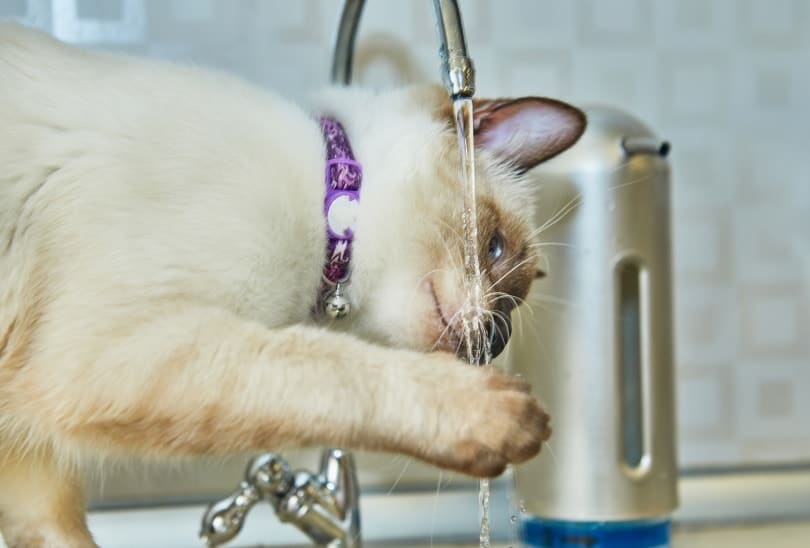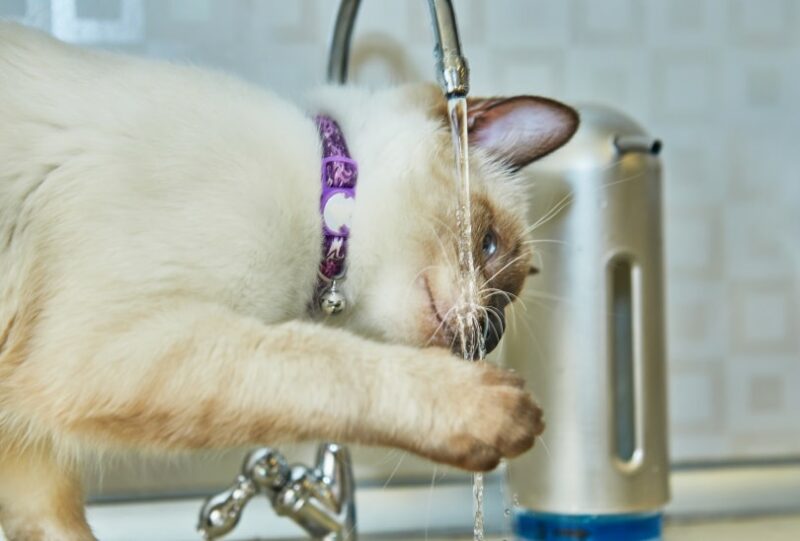Best known for their vocal nature and intelligence, Siamese cats are the picture of sophistication. A less well-known fact about them is how much they like water. While not all Siamese cats enjoy water to the same extent, many like to dip a paw in now and then and splash it all over the place.
Any cat liking water seems impossible given their tendency to stay well away from anything wet. It can be a surprise when you find your Siamese batting at the water from a faucet or grooming themselves with the contents of their water bowl.
To clear up the confusion, we put together this guide to explain why Siamese cats like water so much and how you can safely let them enjoy themselves.
What Are Siamese Cats?
Legend has it that the Siamese were once used as guards for the King of Siam (now Thailand). They’d perch on pillars around the throne and launch themselves at those whom they deemed threats to the crown.
Whether this is true or not is hard to say. What we do know for certain is that these cats were favored companions for both religious leaders and royalty.
They were introduced to Europe in 1884 and the U.S.A. in the late 1890s. While they weren’t overly popular until after World War II, they’re well-loved for their intelligence, trainability, and affectionate natures.

Why Do Siamese Cats Like Water?
Cats make their dislike of water obvious, and it can be a surprise when one shows that they don’t dislike it as much as their other feline friends do. It’s hard to say for sure why Siamese cats enjoy water more than most other breeds, but here are a few common theories.
Curiosity
All cats are curious; it’s just part of who they are. The Siamese, with their level of intelligence, love to explore as much as they love to chat your ear off.
Water — whether it’s running from a faucet, dripping down a shower wall, or standing in a bowl — is intriguing in how it ripples and catches the light. Even the sound of running water can draw the attention of your Siamese.
They’ll bat at the reflection that they spot in their bowl or simply disturb the water so they can see how it moves when they touch it. While this often means you’ll have many puddles to clean up, your cat’s curiosity will be sated.

Grooming
Cats might not appreciate baths as much as dogs do, but they do like to keep themselves clean. Siamese cats have been known to dip their paw in their water dish and use it to wash their face or clean the dirt off their claws.
Instinct
All living things require a certain amount of water, and showing interest in it is instinctual. Cats are usually more intrigued by running water. In the wild, stagnant water can contain all manner of parasites and dirt that can make drinking it dangerous.
While their water bowl is kept clean, your cat’s instincts will still tell them that the still water is less safe to drink than straight from the faucet. It’s for this reason that many pet stores offer fountain water bowls that entice your cat or dog to drink by keeping the water moving.
Instinct can also come into play whenever your Siamese splashes around in their water bowl. Their wild ancestors would seek out running water in search of fish. These hunting instincts might not be useful for their water bowl in your house, but they’ll still be present deep down.
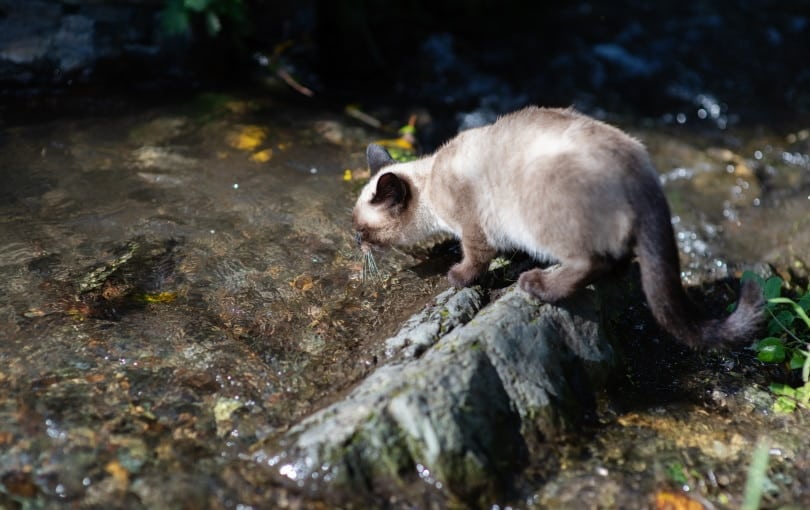
Playtime
Siamese cats are notorious for being playful. They enjoy exploring everything, and water, with how it glistens and moves, is the perfect thing to encourage their playful natures. Their intelligence also makes it easy for them to become bored. To avoid this, your Siamese kitty will find ways to amuse themselves.
Splashing water all over the place might not be much fun for you when you have to clean it up, but your cat will enjoy how the water feels on their paws. Depending on how much mischief they enjoy getting up to, they might just find your grumbling amusing too.
Temperature
Generally, cats are good at moderating their temperature. They’ll find a cool, shady spot to settle on during warm days and take a nap until it’s cold enough to move around. Although few cats like to play with water, it’s another way that they can keep themselves cool.
While some cats will prefer to simply drink more than usual, your Siamese might take their playful antics with their water bowl to the next level. Where they simply splashed a little water during the cold seasons, in warm months, they might be more likely to make more of a mess.
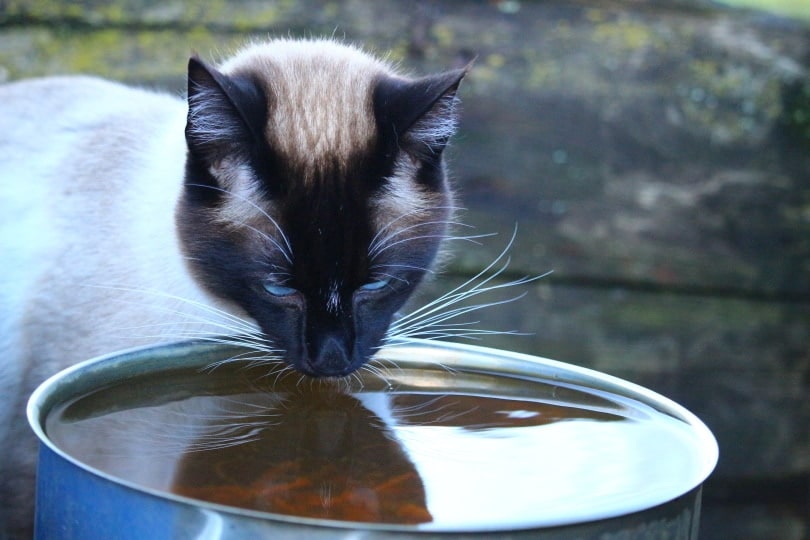
Do Siamese Cats Like Baths?
While most Siamese cats do enjoy playing with water, this doesn’t mean they enjoy being bathed any more than most other cat breeds do. Cats are notorious for keeping themselves clean, enough that they rarely need us to wash them. Being drenched in water can be an unpleasant experience for them.
There comes a time, however, when our mischievous kitty gets into such a mess that they can’t go without a bath. This often isn’t a pleasant experience, even for cats like the Siamese, which are generally happy to be around water.
If they’re introduced to baths early on, though, and taught that it’s nothing to be afraid of, your cat is more likely to tolerate being bathed when they need it. It’s for this reason that not all Siamese cats will tolerate bath time, even if yours is always demanding to be let into the bathroom while you’re showering.
Your Siamese cat’s familiarity with bathing, their past experiences with water, and how much they enjoy splashing around will all play a part in deciding how much they enjoy bath time. Never force your cat to accept a bath, though; you’ll risk breaking their trust and traumatizing them.
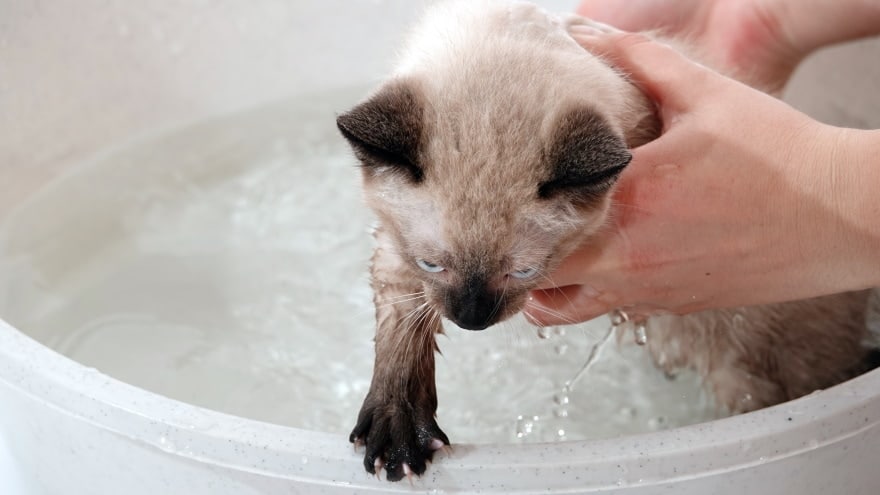
Why Do Cats Dislike Water?
Disliking water can be a result of a few things. Depending on your cat, whether they’re a Siamese or not, the reason that they don’t like to be around water can vary.
Discomfort
At some point or another, we’ve all gotten caught out in a rainstorm without a coat, usually when we’re nowhere near home. Or perhaps your shoes have holes and you’ve stepped in too many puddles on the walk home. Either way, we’ve all experienced sodden clothes. They become heavy, cold, and wet in that discomforting way that nobody enjoys.
Our cats don’t have the luxury of removing their coat when they get wet. They have to wait for it to dry, which means putting up with the heavy and cold wetness. Considering their love of warmth and comfort, you can see why cats don’t like getting wet.
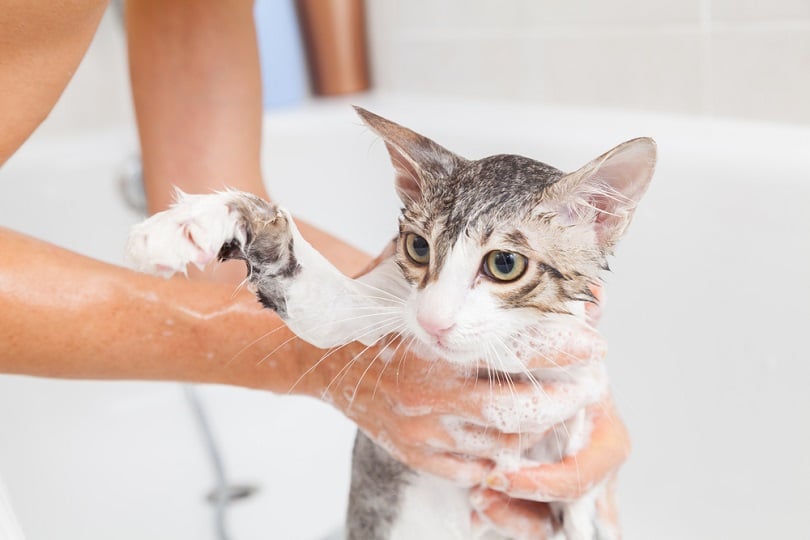
Past Experiences
If you’ve adopted a stray from a rescue or even off the street, there’s no way of knowing what they’ve experienced in the past. Your cat might have experienced something traumatic regarding water, like almost drowning. In this case, they’ll be much warier about bodies of water than most other cats would be.
Let Your Siamese Cat Enjoy Water
Scolding your Siamese cat when they play with water will only make them wary about you — and their water bowl. With water being an important way to keep them healthy, it’s safer to encourage their playtime. A happy cat is a healthy one, after all.
Fortunately, there are a few ways that you can keep your home puddle free without scaring your cat.
- Water-filled toys
- Waterproof mats under their food and water bowls
- Leaving the door open when you’re bathing
- Using a cat fountain water bowl
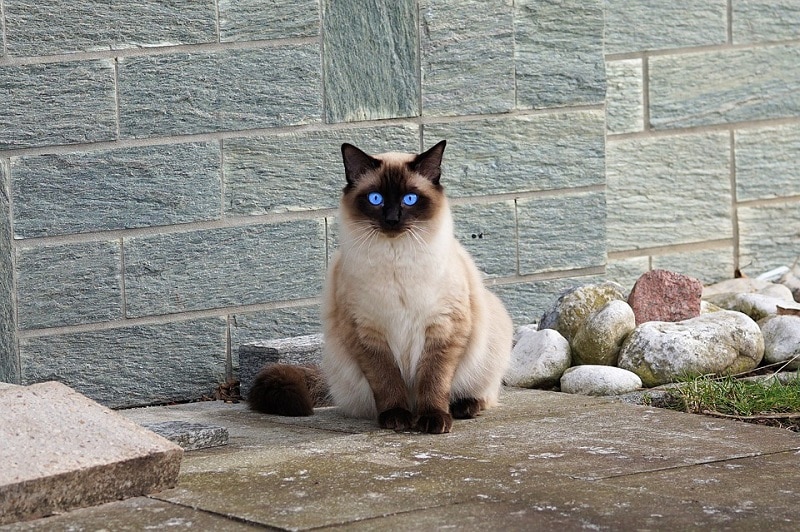
What Other Cat Breeds Like Water?
Siamese cats aren’t the only felines that enjoy water-filled playtimes. Several other breeds enjoy splashing around just as much as our talkative Siamese friends.
A few of the more well-known water-loving cat breeds are:
Do note that although these breeds are all well-known for liking water, not all members of the breed will tolerate it the same way. Some may be warier than others.
Final Thoughts
Siamese cats, despite their regal appearance, love to play with water. They’ll splash in their water bowl and chase water droplets around the sink to amuse themselves. Not all Siamese cats will play with water the same way, though, as some might hate getting wet just like most other breeds, but others love to entertain themselves with the cool wet stuff.
Gently encourage your Siamese to play to keep them from getting bored. Keeping your cat happy will make any puddles that you have to clean up more than worth the effort.
Featured Image Credit: AlexDonin, Shutterstock

